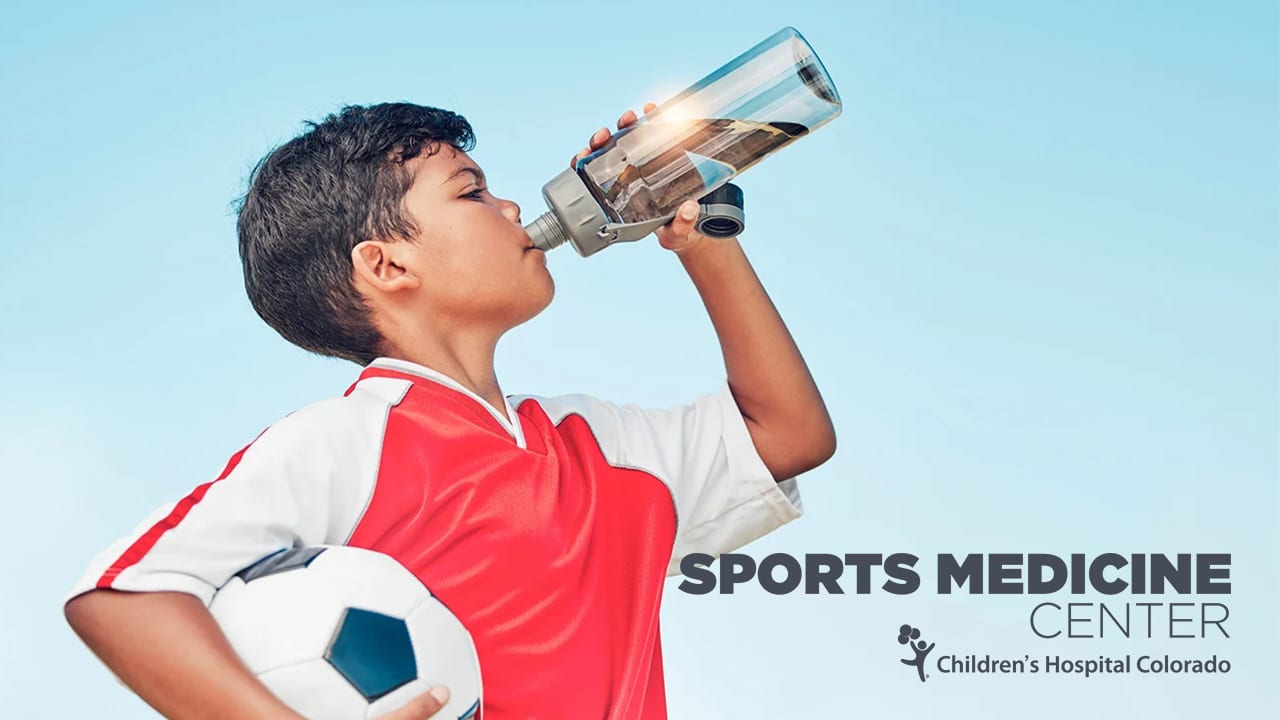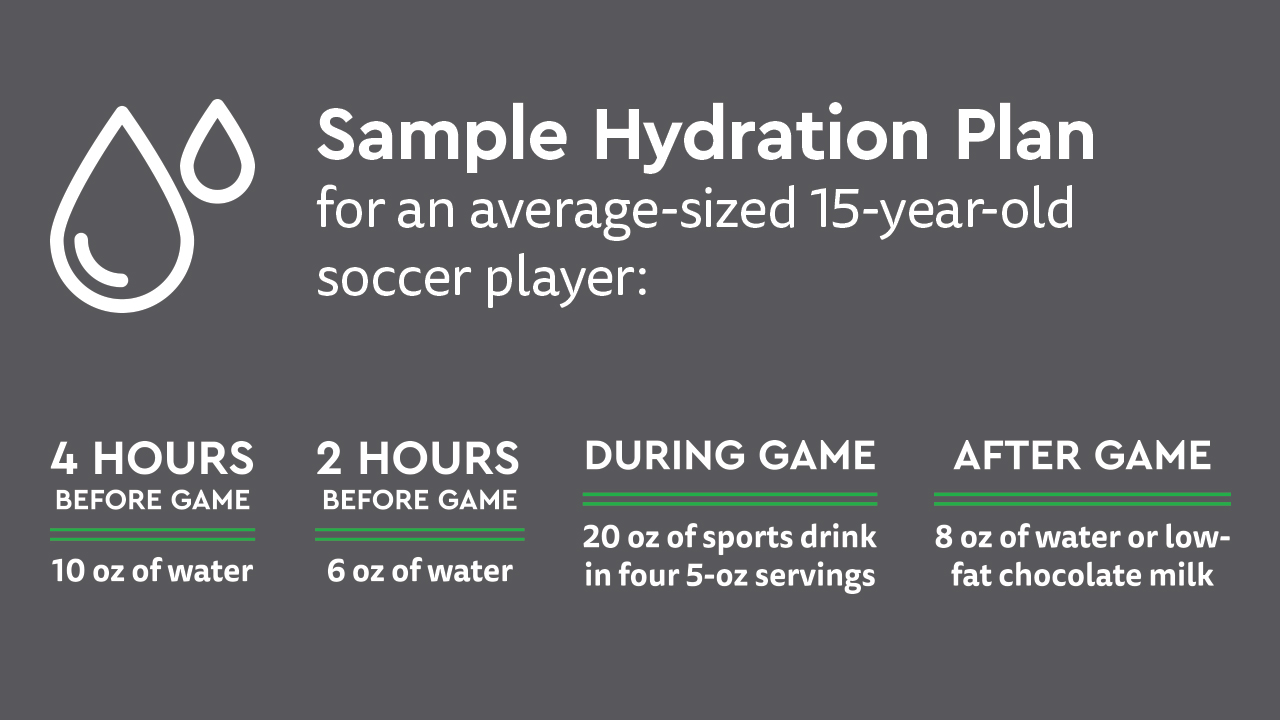Colorado has seen record breaking heat and dryness in recent summers. Yet, many high school summer camps and training programs are in full swing despite the high temperatures. Whether your child is playing baseball, training for football or enjoying cross country runs, hydration is important to help prevent heat related illness.
Hot and dry weather increases your young athlete’s risk for dehydration. And dehydration can decrease athletic and mental performance and lead to heat illness, including: heat cramps, heat exhaustion and life-threatening heat stroke.
Who is at greater risk for dehydration?
All kids exercising in the heat can get dehydrated, but some are at greater risk than others, including:
- Athletes who wear heat-retaining protective gear such as football and lacrosse pads and helmets
- Athletes who are not acclimated to exercising in the heat
- Athletes with a medical condition, including a recent illness or chronic condition like type 1 diabetes and Sickle Cell Anemia
- Participation in double practices, also known as two-a-days, which prevent athletes from properly rehydrating between events
What are the signs and symptoms of dehydration in kids?
While dehydration can look different for every athlete, knowing the signs and symptoms can help prevent more serious complications of heat illness. The signs and symptoms of dehydration include:
- Thirst
- Dark or strong-smelling urine
- Using the bathroom less frequently
- Faintness or dizziness
- Nausea
- Heavy sweating
- Headache
- Cool or moist pale skin
- A rapid but weak heartbeat
- Muscle cramps
- Excessive tiredness
- Dry lips, mouth or tongue
- Decreased athletic performance
Tips to stay hydrated this summer
What to eat for heat illness
- Choose salty snacks. Snacks like pretzels and popcorn provide electrolytes and, because they make you thirsty, encourage you to drink more fluids.
- Snack on foods with high water content. Fruits and vegetables such as watermelon, grapes, cantaloupe and cucumber can help to rehydrate. Also, beverages like drinkable yogurt and low-fat chocolate milk are hydrating and helpful for active recovery.
What to drink for heat illness
- Sports drinks are recommended for before or after intense exercise that lasts 30 minutes or more. These help to replace electrolytes and sugars and can aid energy availability.
- If symptoms of heat illness are detected, slow and small sips of water are best as it’s more easily digestible.
What not to drink for heat illness
- Pediatric rehydration products (such as Pedialyte®), coconut water, “enhanced” waters and low-calorie sports drinks don't contain the appropriate balance of carbohydrates and electrolytes to rehydrate.
- Energy drinks, soda or coffee that contain B vitamins or caffeine can be harmful to young athletes and contribute to dehydration.
When to drink for hydration and heat safety
- Drinking throughout the day is the most effective way to stay hydrated. Carrying a reusable water bottle can be helpful.
- Begin drinking fluids about four hours before practice. If you have an early event, start the night before.
- During practice, rehydrate every 15 to 30 minutes, if possible.
- To replace fluids and electrolytes lost through sweating, especially during double practice days, adolescent athletes should consume an extra 8 ounces of fluid after events.
How much should you drink to avoid dehydration?
The amount of water or sports drink you need is different for each athlete. To make sure you’re getting enough fluids, monitor your urine color and pay attention to thirst. If your urine seems dark or you're thirstier than usual, you need to drink more fluids. Thirst is the best “in the moment indicator” that your body needs replenished.
See the sample hydration schedule below for an average 15-year-old football player (5’7”, 130 pounds), who should consume at least 76 ounces of water a day:
- Four hours before 1st practice: 10 oz of water
- Two hours before 1st practice: 6 oz of water
- During 1st practice: 20 oz of sports drink split into four 5 oz servings
- After 1st practice: 8 oz water and 8 oz of low-fat chocolate milk, as needed for recovery
- During 2nd practice: 20 oz of sports drink split into four 5 oz servings
- At least another 10 oz of water throughout the evening


